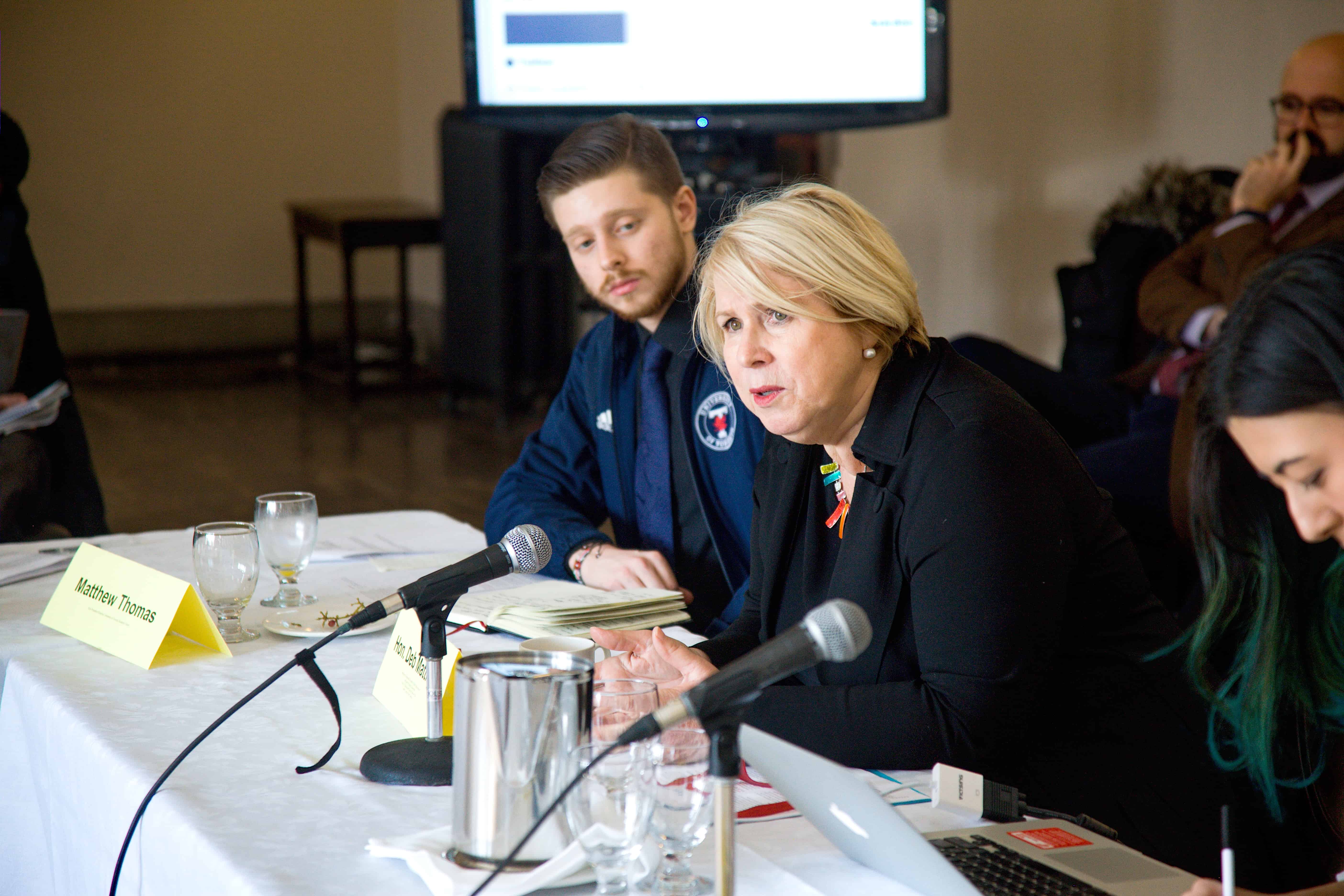On February 16, the University of Toronto Students’ Union (UTSU) hosted a roundtable discussion on the cost of higher education in Ontario with Ontario’s Deputy Premier and Minister of Advanced Education and Skills Deb Matthews. The conversation was held at Hart House, and the panel included students from a variety of backgrounds and fields of study.
The UTSU’s brief for the event had three main areas of focus. It recommended that the Ontario government should firstly, “maintain arts and science tuition increase caps at 3%, lower professional faculty tuition increase caps from 5% to 3%, and regulate international tuition fees,” secondly, increase “government funding for post-secondary institutions,” and thirdly allow for “a permanent seat for the U of T Professional Faculty students on the Minister’s Post-Secondary Student Advisory Council.”
Currently, professional faculties have no official representation on this council. Given that there is no professional faculty association on the provincial level, the brief asserts that U of T — which has 11 professional faculty programs including approximately 15,000 students — would be in a strong position to “represent and advocate for professional faculty students.”
The roundtable brought with it two main developments: first, an expressed commitment from Matthews to hold similar events in the future and meet with the UTSU on an ongoing basis, and second, a promise from Matthews to consider adding a seat to the Minister’s Post-Secondary Student Advisory Council for a professional faculties representative.
“What real commitments can be made right now regarding the ministry and the UTSU’s continued relationship? For example, holding this event again,” asked Matthew Thomas, the Vice-President External at the UTSU.
“Yeah. I mean we couldn’t be any closer,” responded Matthews, with a laugh. “You know where to find me and I know where to find you, and I look forward to continuing a great relationship.”
Later, Ryan Gomes, VP Professional Faculties at the UTSU, asked Matthews: “Would you consider [having] a dedicated seat to someone in my position, someone from the UTSU, on [the council]?”
“Absolutely. I would have no problem with that,” replied Matthews.
Thomas termed the meeting “a victory,” and emphasized the importance of the role played by “direct student input” in creating the tuition package brief and in the roundtable discussion. “When I came into this position, I wanted to set up a relationship between the UTSU and the Ministry,” said Thomas. “And today, we did that.”
Aidan Swirsky, a third year University College student who participated in the roundtable, raised the question of whether future funding will be based more on the quality of education, as related to its associated job or skill-based learning.
“We haven’t defined… what these quality metrics are, so that is still very much an active conversation. That work is underway now,” replied Matthews, suggesting a potential long-term shift in the approach the government plans to take towards targeted education and tuition funding.
Matthews added that she “would be really interested to hear… how students would define success in education.”
Samuel McCulloch, an engineering student, repeatedly emphasized the need for still greater transparency as to where exactly students’ grants and loan money comes from and Shaan Bhambra, fourth year Trinity College student, reiterated this point. Both expressed that measures like the government’s new online tuition cost calculator are a step in the right direction. The calculator displays the amount in grants and loans that prospective students are likely to receive based on a few basic questions.
Throughout the roundtable, Matthews emphasized the importance of breaking down financial and social barriers to postsecondary education.
Despite its prominence in the brief, discussion regarding the need to establish new tuition increase caps was limited. While a portion of the discussion concerned the high cost of tuition for international students, no tangible inroads were made on this front either.
According to Matthews, the new OSAP application and relevant information should be available online in “two to three weeks.”


